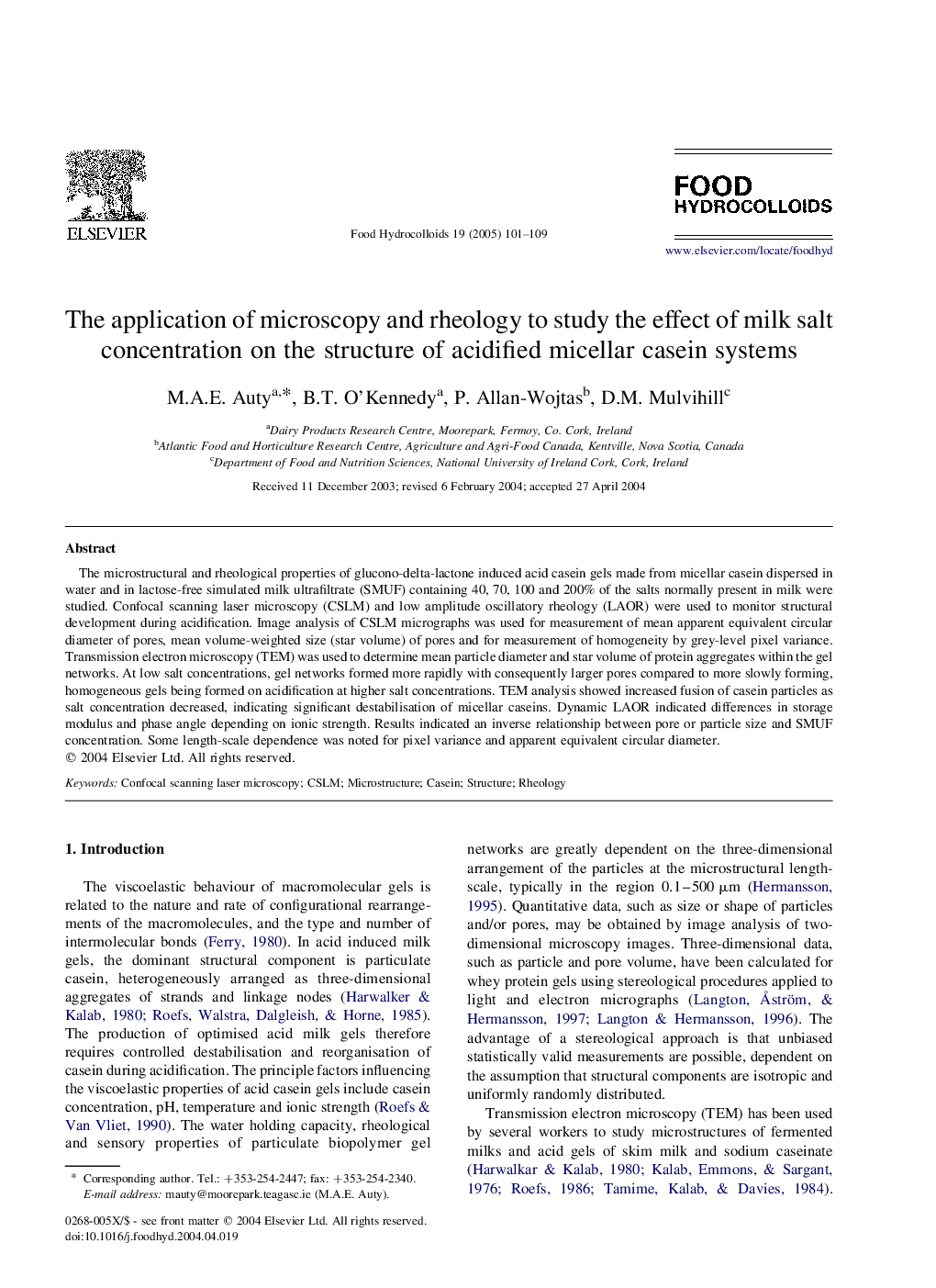| Article ID | Journal | Published Year | Pages | File Type |
|---|---|---|---|---|
| 10375873 | Food Hydrocolloids | 2005 | 9 Pages |
Abstract
The microstructural and rheological properties of glucono-delta-lactone induced acid casein gels made from micellar casein dispersed in water and in lactose-free simulated milk ultrafiltrate (SMUF) containing 40, 70, 100 and 200% of the salts normally present in milk were studied. Confocal scanning laser microscopy (CSLM) and low amplitude oscillatory rheology (LAOR) were used to monitor structural development during acidification. Image analysis of CSLM micrographs was used for measurement of mean apparent equivalent circular diameter of pores, mean volume-weighted size (star volume) of pores and for measurement of homogeneity by grey-level pixel variance. Transmission electron microscopy (TEM) was used to determine mean particle diameter and star volume of protein aggregates within the gel networks. At low salt concentrations, gel networks formed more rapidly with consequently larger pores compared to more slowly forming, homogeneous gels being formed on acidification at higher salt concentrations. TEM analysis showed increased fusion of casein particles as salt concentration decreased, indicating significant destabilisation of micellar caseins. Dynamic LAOR indicated differences in storage modulus and phase angle depending on ionic strength. Results indicated an inverse relationship between pore or particle size and SMUF concentration. Some length-scale dependence was noted for pixel variance and apparent equivalent circular diameter.
Related Topics
Physical Sciences and Engineering
Chemical Engineering
Colloid and Surface Chemistry
Authors
M.A.E. Auty, B.T. O'Kennedy, P. Allan-Wojtas, D.M. Mulvihill,
